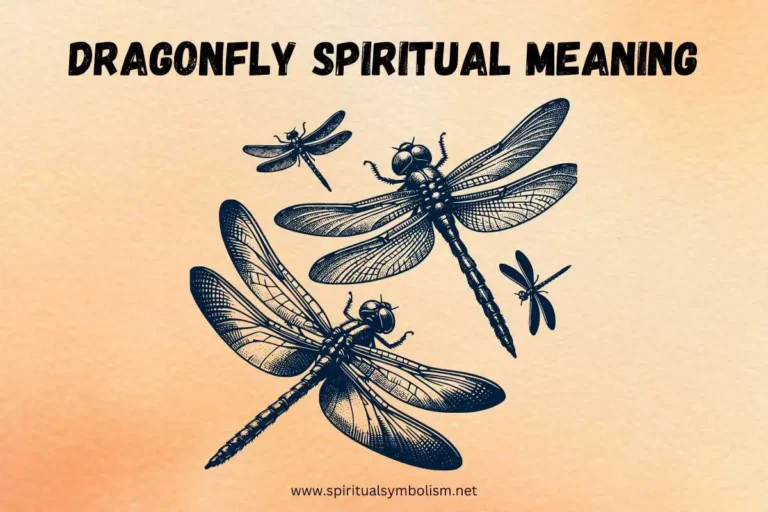Color Blue Spiritual Meaning, Symbolism & Psychology

Blue is more than just a color; it is a vast ocean of meaning that touches our spiritual hearts, psychological minds, and cultural histories.
In this blog post, we’ll explore the profound impact of the color blue on spirituality, symbolism, and psychology.
Whether you’re a spiritual seeker, a psychology enthusiast, or someone fascinated by color symbolism, there’s something here for you. Let’s unravel the mysteries of blue together.
What is Color Blue?
Blue is one of the three primary colors in the RGB color model, which means it cannot be created by mixing other colors. It’s the color of the vast sky and the deep ocean, evoking a sense of infinity and calmness.
But blue is not just a visual experience; it also holds deep emotional and spiritual significance. When we think of blue, we often associate it with tranquility, peace, and serenity.
Scientifically, blue light has the shortest wavelength (about 450 to 495 nanometers) and is scattered in all directions by the atmospheric particles, which is why the sky looks blue.
Blue is also a cool color, often calming and soothing to the human mind. This calming effect is why blue is frequently used in spaces that require a peaceful atmosphere, like bedrooms and meditation rooms.
In different cultures, blue has been used to symbolize various concepts and emotions. From ancient times to modern-day applications, the color blue has always held a special place in human consciousness.
Color Blue Psychology
Psychologically, blue is often linked to feelings of calmness and serenity. It has been shown to reduce stress and create a sense of tranquility in various settings. This is why many healthcare facilities and wellness centers incorporate blue into their design schemes.
Additionally, blue is believed to enhance productivity and focus, making it a popular choice for office spaces.
Interestingly, blue is also associated with trust and reliability. This is why many financial institutions and corporations use blue in their branding. The color conveys a sense of professionalism and dependability, helping to build consumer confidence.
However, blue is not without its complexities. While it is generally seen as a positive color, it can also evoke feelings of sadness and melancholy.
The term “feeling blue” is often used to describe a state of sadness or depression. This duality makes blue a fascinating color to study in psychology, as it embodies a range of emotions from peace to sorrow.
What Does the Color Blue Symbolize?

Blue is a color rich in symbolism. In many cultures, it represents purity, wisdom, and divine connection. It is often seen as a protective color, warding off negative energies and bringing peace to the wearer. In ancient Egypt, blue was associated with the sky and the Nile, symbolizing life and rebirth.
In Western cultures, blue is commonly linked to royalty and authority. This stems from the historical use of blue dyes, which were rare and expensive. Consequently, blue became a color worn by the elite, symbolizing power and prestige.
In spiritual contexts, blue is often associated with communication and self-expression. It is connected to the throat chakra, which governs our ability to communicate effectively and express our true selves.
Wearing or meditating with the color blue can help open this chakra, allowing for clearer communication and greater authenticity.
Spiritual Meanings of Color Blue
1. Inner Peace
Blue is often seen as a color that brings calmness and tranquility. Imagine sitting by a peaceful lake or looking at a clear blue sky. These experiences can make you feel relaxed and at peace. Similarly, the color blue can help create a peaceful inner state. For example, when you are feeling stressed, looking at something blue like the ocean or even a blue wall can help you feel calmer.
2. Healing
Many people believe that blue has healing properties, especially for emotional and mental health. For instance, when you feel sad or anxious, spending time in a blue room might help lift your spirits. Some hospitals even use blue lights to create a calming environment for patients. This healing effect isn’t just about physical health but also emotional well-being.
3. Spiritual Awakening
Blue is considered a color of spiritual insight and awakening. Think about how the sky and the ocean, both blue, seem vast and infinite. This vastness can make you ponder about life and the universe, helping you deepen your spiritual practice. For example, meditating while focusing on a blue object might help you reach a higher state of awareness.
4. Protection
In many cultures, blue is used as a protective color. Some people wear blue talismans or hang blue decorations to ward off negative energies. For example, in Middle Eastern cultures, people often use the “evil eye” amulet, which is blue, to protect against bad luck. This belief in blue’s protective power has been around for centuries.
5. Communication
Blue is linked to the throat chakra, which governs communication and self-expression. Imagine having a blue crystal or wearing blue clothing when you have to give a speech or presentation. This can help you feel more confident and articulate. The idea is that blue helps open up your ability to communicate clearly and effectively.
6. Wisdom
Blue is often seen as a color of wisdom and intelligence. Think about how many schools and libraries use blue in their designs. This is because blue helps with clear thinking and decision-making. For example, if you have a test coming up, studying in a room with blue walls might help you concentrate better.
7. Divine Connection
Many spiritual practices view blue as a color that enhances one’s connection to the divine. For instance, you might see blue used in religious artwork or temples. This is because blue is thought to bring you closer to a higher power. Meditating on the color blue can help you feel a stronger connection to your spirituality.
8. Trust
Blue symbolizes trust and reliability. Think about how many banks and companies use blue in their logos. This is because blue creates a sense of trust and dependability. For example, if a friend often wears blue, you might subconsciously feel that they are someone you can rely on. This makes blue an important color for building strong, honest relationships.
Color Blue Spiritual Meanings in Different Cultures
Ancient Egypt
In Ancient Egypt, blue was a sacred color associated with the gods and the afterlife. It symbolized the heavens and was used in various religious artifacts and amulets. The blue lapis lazuli stone was especially significant, believed to provide protection, spiritual insight, and enhance one’s connection to the divine.
This precious stone was often imported from distant lands, underlining its importance and value in Egyptian culture. Pharaohs and high priests adorned themselves with blue jewelry, signifying their divine status and authority.
Native American Culture
Among Native American tribes, blue is often linked to the spirit world and communication with ancestors. It is considered a protective color, used in various rituals and ceremonies to ward off evil spirits.
Blue feathers, beads, and paint were commonly incorporated into ceremonial attire and symbolic objects, enhancing their spiritual significance. In many tribes, blue was also associated with the sky and water, elements that were believed to possess life-giving and purifying properties.
Storytellers and shamans often depicted mythological tales using the color blue to emphasize spiritual journeys and connections.
Hinduism
In Hinduism, blue is the color of the deity Krishna, who is often depicted with blue skin. This color symbolizes the infinite and the immeasurable, reflecting the divine nature of Krishna. It is also associated with truth, wisdom, and the divine aura of Vishnu, of whom Krishna is an incarnation.
Temples and shrines dedicate significant space to blue-hued representations of these deities, often using intricate paintings and statues.
Religious texts and hymns describe the blue of Krishna’s skin as a representation of his infinite energy and boundless love for humanity.
Buddhism
In Buddhism, blue represents purity and healing. The Medicine Buddha, a figure of healing and compassion, is often depicted in blue, symbolizing his ability to ward off diseases and grant longevity.
Blue is also used in various mandalas and thangkas to symbolize the infinite sky and the depth of spiritual wisdom. These artworks serve as meditation aids, guiding practitioners in their quest for enlightenment and inner peace.
Additionally, blue lotus flowers, which signify the victory of the spirit over the senses, are a common motif in Buddhist iconography, reinforcing the color’s sacred connotations.
Christianity
In Christian tradition, blue is the color of the Virgin Mary, symbolizing purity, peace, and divine grace. It is often used in religious art, iconography, and stained glass windows to convey a sense of heavenly peace and protection.
The association of blue with Mary has medieval roots, where artists used costly blue pigments like ultramarine to honor her significance. This color choice aimed to invoke a sense of reverence and divine serenity.
Blue is also featured prominently in liturgical vestments and church decor during seasons that focus on reflection, hope, and solemnity, such as Advent.
Usage of the Color Blue in History
Historically, blue has been a significant color across various cultures and time periods. In ancient times, blue dyes were rare and expensive, making blue garments a symbol of wealth and status. The ancient Egyptians prized blue lapis lazuli, using it in jewelry and sacred artifacts.
During the Renaissance, blue gained popularity in European art and fashion. The development of new blue pigments, such as ultramarine and cobalt blue, allowed artists to create vibrant, striking works. Blue became associated with the Virgin Mary, symbolizing purity and divinity.
In the modern era, blue continues to hold cultural significance. It is often used in corporate branding to convey trust and reliability. In fashion, blue is a versatile color that can be both calming and striking, making it a popular choice for various styles and settings.
Spiritual Meaning of Shades of Blue
Light Blue
Light blue is often associated with tranquility and peace, evoking the serene image of a clear, cloudless sky or the gentle waves of a calm sea. It is believed to help calm the mind and promote relaxation, reducing stress and anxiety.
In spiritual practices, light blue is used to enhance communication and self-expression, aiding in the flow of energy through the throat chakra.
This chakra governs our ability to express ourselves truthfully and listen to others with an open heart, making light blue an excellent color for fostering open dialogue and understanding.
Royal Blue
Royal blue is a color of authority and confidence, often seen in the attire of leaders and figures of power. It symbolizes wisdom and clarity, helping to enhance one’s intuitive abilities and decision-making skills.
In spiritual contexts, royal blue is often used to deepen meditation and promote a sense of inner peace and balance. It encourages the development of inner wisdom and insight, aiding individuals in connecting with their higher selves and accessing deeper levels of consciousness.
Navy Blue
Navy blue is a color of deep reflection and introspection, resembling the profound depths of the ocean and the night sky. It is associated with the mysteries of the universe and the unseen, encouraging us to look within and explore the depths of our own soul.
In spiritual practices, navy blue is used to enhance inner vision and connect with higher states of consciousness. It supports the journey of spiritual awakening, helping to unlock hidden truths and fostering a connection with the divine.
Biblical Meanings of The Color Blue
In the Bible, blue is a significant color often associated with the heavens and the divine. It represents purity, holiness, and the Word of God. In the Old Testament, blue was used in the garments of the high priest and the tapestries of the Tabernacle, symbolizing divine presence and protection.
The Book of Exodus mentions the use of blue in the construction of the Tabernacle, stating that the Israelites were instructed to use blue, purple, and scarlet yarns to weave the curtains. This combination of colors symbolized the glory and majesty of God.
In Christian art, blue is often used to depict the Virgin Mary, symbolizing purity and divine grace. It is also used in stained glass windows to represent the heavenly realms and the infinite love of God.
Color Blue as the Throat Chakra Color
The throat chakra, also known as Vishuddha, is the fifth chakra in the body, located at the throat. It is associated with communication, self-expression, and truth. The color blue is linked to this chakra, symbolizing clarity and purity in speech.
When the throat chakra is balanced, one can communicate effectively and express their true self without fear. Meditating with blue stones or visualizing a blue light at the throat can help to open and balance this chakra, promoting clear and honest communication.
An imbalanced throat chakra can lead to issues with communication, such as difficulty expressing oneself or fear of speaking out. Using the color blue in meditation and daily life can help to restore balance and promote a sense of ease in communication.
Seeing Blue in a Dream Spiritual Meaning
Seeing the color blue in a dream can have various spiritual meanings, depending on the context of the dream. Generally, blue is associated with peace, tranquility, and spiritual insight. It may indicate a period of calm and reflection in your waking life.
If you see a clear blue sky in your dream, it may symbolize clarity and freedom. You may be experiencing a sense of liberation and openness in your life, allowing for new opportunities and growth.
A body of water, such as a blue ocean or lake, can symbolize deep emotions and the subconscious mind. It may suggest that you are exploring your inner self and uncovering hidden truths. Pay attention to the state of the water, as calm waters indicate peace, while turbulent waters may suggest emotional turmoil.
Blue Gemstones and Their Meanings
Lapis Lazuli
Lapis Lazuli is known for its deep blue color and has been valued for centuries for its spiritual properties. It is believed to enhance wisdom, intuition, and spiritual insight. Lapis Lazuli is often used in meditation to deepen one’s connection with the divine.
Blue Sapphire
Blue Sapphire is a stone of wisdom and royalty. It is believed to enhance mental clarity, focus, and spiritual insight. Blue Sapphire is often used to promote inner peace and balance, helping to align the mind, body, and spirit.
Aquamarine
Aquamarine is a stone of calm and tranquility. Its light blue color is associated with the ocean, symbolizing peace and clarity. Aquamarine is believed to help reduce stress and promote clear communication, making it an excellent stone for the throat chakra.
Turquoise
Turquoise is a stone of protection and healing. Its blue-green color is associated with the sky and the earth, symbolizing balance and harmony. Turquoise is believed to enhance communication and promote a sense of well-being, making it a powerful stone for spiritual growth.
Blue Topaz
Blue Topaz is a stone of clarity and truth. Its light blue color is associated with the mind and communication, helping to enhance mental clarity and self-expression. Blue Topaz is believed to promote a sense of calm and balance, making it an excellent stone for meditation and spiritual practices.
Final Words
The color blue is a profound and multifaceted symbol that touches various aspects of our lives, from our emotions and psychology to our spiritual practices and cultural histories.
Whether you are a spiritual seeker, a psychology enthusiast, or someone fascinated by color symbolism, understanding the meanings and significance of blue can enrich your personal growth and self-discovery.
Take a moment to reflect on how the color blue manifests in your life. How does it influence your emotions, thoughts, and spiritual practices?
By exploring the depths of blue, you can uncover new insights and connections that enhance your spiritual journey.
You Might Also Like
1) 10 Spiritual Meanings of Color Brown, Symbolism & Psychology
2) The Color Green Spiritual Meaning, Symbolism & Psychology
3) The Color Red Spiritual Meaning, Symbolism & Psychology
4) Spiritual Meaning of Sunshower: Raining While the Sun is Out





